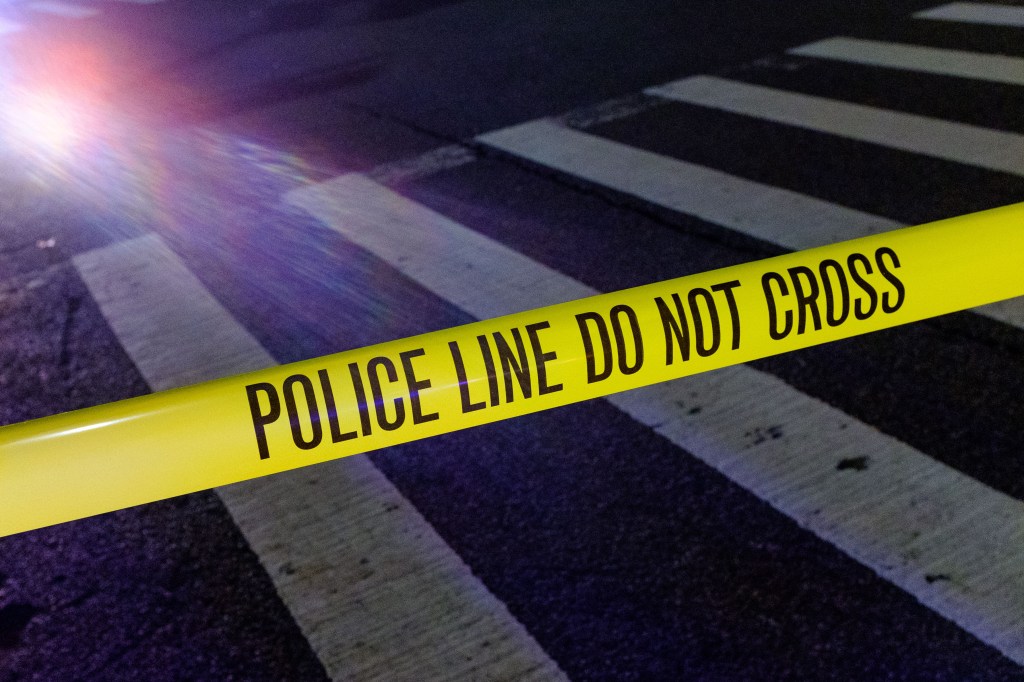In the early morning hours of Saturday, a devastating hit-and-run crash in Brooklyn’s East Williamsburg neighborhood claimed the life of a 32-year-old cyclist, sparking renewed discussions about urban road safety, driver accountability, and the vulnerabilities faced by cyclists in New York City’s increasingly congested streets.
The Incident: A Life Lost in Seconds
At approximately 2:30 a.m., the victim was cycling westbound along Meserole Street, approaching the intersection with Lorimer Street, when a blue Tesla struck her with fatal force. The impact was so severe that it immediately claimed the woman’s life, according to police reports. What makes this tragedy particularly egregious is that the Tesla driver fled the scene, leaving the victim behind without rendering aid or accepting responsibility for their actions.
The intersection of Meserole and Lorimer Streets, while not among the city’s most notorious accident hotspots, represents a typical urban crossroads where multiple transportation modes converge. During the early morning hours, visibility can be compromised, and the reduced traffic might give both drivers and cyclists a false sense of security about road conditions.
The Broader Context of Cycling Safety in NYC
Alarming Statistics
This tragic incident occurs against a backdrop of concerning trends in cyclist safety across New York City. According to the NYC Department of Transportation, cyclist fatalities have fluctuated in recent years, but each death represents not just a statistic, but a life cut short and a family devastated. The city has been working toward its “Vision Zero” initiative, launched in 2014 with the ambitious goal of eliminating traffic deaths and serious injuries.
Women cyclists face particular vulnerabilities on city streets, often due to infrastructure design that doesn’t adequately account for different cycling patterns and comfort levels. Studies have shown that protected bike lanes significantly increase safety for all cyclists, but particularly encourage more women and casual riders to use bicycles for transportation.
The East Williamsburg Area
East Williamsburg has undergone significant transformation over the past decade, evolving from an industrial area to a mixed-use neighborhood with increasing residential density. This transformation has brought more pedestrians and cyclists to streets that were originally designed primarily for industrial traffic and trucks. The area’s street infrastructure has struggled to keep pace with changing usage patterns, creating potential conflict zones between different types of road users.
The Hit-and-Run Crisis
Legal and Moral Implications
Hit-and-run crashes represent one of the most serious violations of both legal responsibility and basic human decency. In New York State, leaving the scene of a fatal accident constitutes a Class D felony, punishable by up to seven years in prison. Beyond the legal consequences, fleeing the scene denies victims potentially life-saving medical attention and compounds the trauma experienced by families and communities.
The decision to flee often stems from panic, fear of consequences, or impairment, but it transforms what might have been a tragic accident into a criminal act. For families of victims, the hit-and-run aspect adds another layer of pain, as they must cope not only with loss but also with the knowledge that someone chose to abandon their loved one in their moment of greatest need.
Investigation Challenges
Modern vehicle technology, particularly in electric vehicles like Tesla, can actually aid in hit-and-run investigations. Tesla vehicles are equipped with extensive data logging systems, cameras, and GPS tracking that can provide crucial evidence. However, investigators must first locate the vehicle and its driver, which can be challenging in a city with millions of residents and vehicles.
The NYPD’s Highway District’s Collision Investigation Squad specializes in these complex cases, using traffic cameras, witness statements, vehicle debris, and other forensic evidence to track down fleeing drivers. The distinctive nature of Tesla vehicles, with their unique design characteristics and relatively smaller numbers compared to traditional vehicles, may actually work in investigators’ favor.
Technology and Road Safety
The Tesla Factor
The involvement of a Tesla in this crash raises questions about advanced vehicle safety systems and their effectiveness in preventing pedestrian and cyclist collisions. Tesla vehicles come equipped with Autopilot hardware and various safety features designed to detect and avoid collisions with pedestrians and cyclists. However, these systems have limitations, particularly in low-light conditions or when drivers are impaired or distracted.
It’s important to note that no current automotive technology can completely prevent accidents caused by reckless, impaired, or inattentive driving. The most advanced safety systems are designed to assist responsible drivers, not replace them.
Urban Infrastructure Solutions
Cities worldwide are implementing various strategies to improve cyclist safety, including:
- Protected bike lanes that physically separate cyclists from vehicle traffic
- Improved lighting at intersections and along cycling routes
- Traffic signal timing that gives cyclists head starts at intersections
- Speed reduction measures in mixed-use areas
- Enhanced visibility through road design and markings
Community Impact and Response
Fatal crashes like this one send shockwaves through local communities, particularly among cyclists who may have traveled the same route or faced similar risks. The cycling community in Brooklyn is tight-knit, and losses are felt personally by many who never knew the victim but understand the shared vulnerability that comes with choosing to travel by bicycle in an urban environment.
Community advocacy groups often use these tragic incidents as catalysts for demanding improved infrastructure and stronger enforcement of traffic laws. The effectiveness of such advocacy can be seen in various improvements made throughout the city in response to previous incidents, though progress often feels frustratingly slow to those who continue to face daily risks.
Moving Forward: Prevention and Justice
While investigators work to bring the perpetrator to justice, this incident serves as a stark reminder of the work still needed to make city streets safe for all users. The victim’s death should not be in vain if it prompts meaningful action on safety improvements, stronger enforcement of traffic laws, and a renewed commitment to the Vision Zero goals.
Every road user has a responsibility to operate with care and consideration for others, whether they’re driving a car, riding a bicycle, or walking. When that responsibility is abdicated, as in this hit-and-run case, the entire community suffers.
Key Takeaways
- A 32-year-old cyclist was killed in a hit-and-run crash involving a blue Tesla in East Williamsburg at 2:30 a.m. Saturday
- Hit-and-run fatalities are felonies in New York State, punishable by up to seven years in prison
- Modern vehicle technology can aid in investigations, but cannot prevent all accidents
- Urban infrastructure improvements like protected bike lanes significantly enhance cyclist safety
- Community advocacy plays a crucial role in pushing for safety improvements following tragic incidents
- Vision Zero initiatives aim to eliminate traffic deaths but require comprehensive approaches involving infrastructure, enforcement, and education
This article is based on reporting from the original source

Born and raised amidst the hustle and bustle of the Big Apple, I’ve witnessed the city’s many exciting phases. When I’m not exploring the city or penning down my thoughts, you can find me sipping on a cup of coffee at my favorite local café, playing chess or planning my next trip. For the last twelve years, I’ve been living in South Williamsburg with my partner Berenike.

